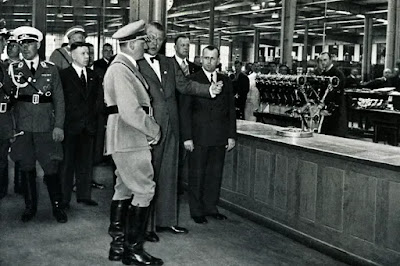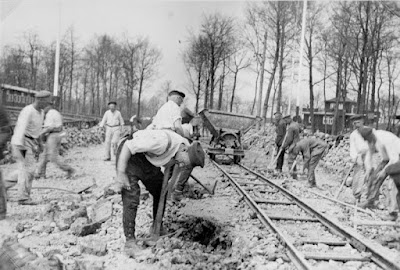“While we read a novel, we are insane - bonkers. We believe in the existence of people who aren't there, we hear their voices... Sanity returns (in most cases) when the book is closed.” - Ursula K. Le Guin
I went “insane” this month and read only novels!
Fiction: Mystery, Crime
BLACK BEACONS MURDER SERIES (also known as DCI Evan Warlow) by Rhys Dylan
I started reading this series in August. By September, I exhausted the titles in the public library’s collection and then had to purchase the rest of the series. This month I read books 11 through 14.
In each successive book, the characters have retained their likeability and sense of humor. Even though the books contain a lot of Welsh language and place names, most phrases are translated. Plus, the settings, traditions, and landscapes in rural Wales also add an interesting, somewhat “exotic” atmosphere.
#11 The Light Remains - When a revered sports legend falls victim to a brutal home invasion, a nation is shaken to its core. Outrage swells and the press and powers that be demand answers.
#12 A Matter of Evidence - A man, recently released from prison after a 20-year wrongful conviction, is discovered dead, igniting a storm of doubt and suspicion. As long-buried secrets claw their way to the surface, the line between truth and deception blurs.
#13 The Last Throw - DCI Evan Warlow confronts what initially appears to be a straightforward case, only to find himself ensnared in a web of deceit. And when a routine press assignment also exposes a team member to a malevolent scheme, chaos begins to spiral.
#14 Dragon’s Breath - A man wanders lost on a freezing night in the Black mountains of Wales. Despite the valiant efforts of the rescue services, he does not survive. Is this an accident? Or murder?
This series has a good balance of forensic evidence, basic police work, and intuition. Each book can stand alone but the characters’ personalities are enriched from one book to the next, just as members of professional “teams” do over the course of their working lives. As soon as book #15 is published, I will order it – I can’t wait!

Audiobook Fiction: Mystery, Crime
Death at the Sign of the Rook by Kate Atkinson
*NOTE: I listened (free with my public library card) to this book on the Libby app.
Don’t go into this expecting a straightforward mystery. It has a farcical feel to it as well as unexplained motives, and things that must have been happening behind the scenes that I wasn’t quite sure of…
A diverse group is gathered at Burton Makepeace, a crumbling manor house, for a murder mystery weekend. We are introduced to each carefully crafted character one at a time and they will eventually be trapped together in the manor house. My favorite was Lady Milton. She is hilarious, I chuckled every time I read her chapters. However, there are a few characters who are less funny - the vicar who's lost his faith and his ability to speak, and the veteran who's lost his leg and his interest in life.
The protagonist, a private detective, Jackson Brodie, is investigating the theft of a renaissance painting from the home of a recently deceased woman. During that investigation, he discovers similar thefts have occurred previously. In each case, the housekeeper/caregiver was the primary suspect but neither the woman nor the art was ever found. Several years ago, Lady Milton was also a victim. She suffered the loss of her last remaining painting of any value, a Turner. The housekeeper, Sophie, who disappeared the same night, is suspected of stealing it. Oh, and a convicted murderer is on the run on the moors around Burton Makepeace. Somehow this all comes together.
“God Almighty, Jackson thought. Neither of them could open their mouths without a cliché falling out.”
It’s a good thing there’s so much humor, because Atkinson takes her time setting up the premise of this book. The plot isn’t nearly as strong as the humor and characters. But, boy, did I enjoy listening to this book! The audiobook reader, Jason Isaacs, was fantastic!
Fiction: Short Stories
Float Up, Sing Down by Laird Hunt
I read Zorrie by the same author, so I decided to give this collection of short stories a read. While Zorrie makes an appearance in this book, it isn’t focused on her.
Float Up, Sing Down is the story of a single day (1982) in a small-town Indiana community through a series of interrelated short stories, each focusing on a different character. There aren't many secrets in a small town where everybody has known each other since they were kids.
“God’s country. Or God’s cousin’s country anyway. Maybe God’s nephew. No need to get grandiose.”
I thoroughly enjoy the simplicity of Hunt’s writing and exploring the rich inner lives of these ordinary people. Each story and history were so different, but I loved the way they subtly wove together so you got a clear picture their relationships with one another and of their community.
Imagine if you could get inside 14 different people's heads, all on the same day, all in the same town, and how many different concurrent experiences, thoughts, feelings, and memories would occur! That's this book.
Fiction: Graphic Novel
Here by Richard McGuire
NOTE: There is a movie based on this graphic novel. I have not seen it yet. I want to watch it just to see how anyone was able to bring this book to the movie screen!
Here is a stunning visual experience! It takes a single spot and examines it over the course of human history. From a prehistoric forest; the hunting grounds of Native Americans; America’s colonial days; contemporary family living; and then on into the future. We see this single spot seemingly unchained from the flow of time and instead as if it is all occurring at once. McGuire shows how we are not just merely an inconsequential speck in the cosmos, but an integral part of history. Despite our differences across time, we all share the same emotional experiences and, ultimately, death. We all love, laugh, cry, and we all die, and yet time marches on.
“Life has a flair for rhyming events,” Benjamin Franklin tells his grandson – indeed it does!

Fiction: Science Fiction
The Hopkins Manuscript by R.C. Sherriff
First published in 1939, as the world was careening towards the Second World War, The Hopkins Manuscript is now considered a classic novel. Reissued in 2023 due to the popularity of the award-winning Netflix movie Don’t Look Up, it tells the story of how a small English village prepares for the end of the world.
The foreword is written from the perspective of an academic society 1,000 years in the future commenting on the manuscript as a historical document. The remainder of the book is the narrative of Edgar Hopkins – author of The Hopkins Manuscript. He wrote about life just before, during and after a catastrophe in which the Moon collides with Earth.
When his story starts, Hopkins is an unmarried, retired teacher who breeds poultry in Hampshire. He is a middle-class, small-minded snob living a lonely life. He looks down his nose at “the lower classes” and then rages with jealously at more successful peers. He idolizes an aristocracy that is unaware and uninterested in his existence. As a result, Edgar’s best friends are chickens.
But his life begins to change when the news comes that the moon is going to crash into the Earth. Hopkins works with his fellow villagers to prepare for the great cataclysm, and he discovers that he likes many of them.
After the great cataclysm, class boundaries and social conventions are destroyed. Hopkins then slowly begins to develop close relationships. He begins to find a fulfillment in helping others. Hopkins admits that the happiest days of his life were immediately after the great cataclysm, working within the small, self-sufficient egalitarian society of local survivors. However, as the national infrastructure recovers and a governmental hierarchy regains control of the country it appeals to the survivors to fulfill their duty “to the state.” Now the survivors’ lives become even more precarious. The great cataclysm was terrifying, but it wasn’t what destroys the western world. That lesson is even more revelatory considering the times we're in now.
“The strange thing is this. Political upstarts, fanatics devoid of all powers of reason and common sense, greedy for wealth and power, their only claim to attention a loud voice and endless cascades of words. These nasty creatures swoop down upon peaceful, hardworking communities.”
While published before World War II, this book is so prophetic of how the British coped and tried to pull together while their country was being bombed. The Hopkins Manuscript is speculative but also a timely and powerful warning from the past that captures human nature in all its complexity.
Also, by R. C. Sherriff but a totally different genre!
Audiobook Fiction: Drama, World War I, Classic
Journey's End by R.C. Sherriff
*NOTE: I listened to this on the Hoopla app (public library). It was produced in February 2024 by L. A. Theater Works and is 1 hour and 47 minutes long.
Set in British trenches during the First World War, this play deals with the horror and futility of trench warfare.
It’s March 1918, and in the trenches of northern France, a group of British officers, led by the war-weary Captain Stanhope, ready themselves for a major German attack while facing their worst fears.
Author, R.C. Sherriff drew on his own experiences in World War I to create the play, which premiered in 1928 starring a young Laurence Olivier. Sherriff had trouble getting it produced because theater managers thought no one would see a play that did not have a leading lady, and no one wanted to see a play about war. However, after Journey's End’s first performance, the audience sat in stunned silence and then gave a standing ovation. It is now considered one of the preeminent works about the horrors of war.
Journey's End is worthwhile listening. I learned about it from an excellent World War I, 3-part series, Long Shadow (BBC documentary) which is available on Amazon Prime Video.
























